It’s the kind of post you scroll past - then stop, scroll back, and read again. Not because it’s dramatic or hyped, but because it hits so close to what a lot of us fear: your daily driver gets clobbered by something as unpredictable and uncontrollable as hail, and now you’re staring at a strange fork in the road. Fix it or let it go. And this decision isn’t about horsepower or battery range - this one’s about money, salvage titles, and whether your car will still be a Tesla when you’re done.
Today, while skimming through the Tesla Owners of San Antonio, Texas Facebook group (which is public, by the way), I came accross a story that speaks to a growing issue among EV owners. Especially in places like Texas, where hail season isn’t just a passing weather event - it’s practically an uninvited yearly guest.
Here’s what Tesla owner Consuelo Ramirez posted:
“Since the hail totaled out my 2019 Tesla Model 3 with 43,000 miles, they will allow me to keep it for $10,000 and I would be responsible out of pocket for the repair repairs. It only has body damage I don’t think I can find a car less than $10,000 right now. Does anybody know how much it would cost for hail damage out of pocket?”
That line stuck with me: “I don’t think I can find a car less than $10,000 right now.” Because Consuelo isn’t wrong. Go look—what can you really get for $10K today that isn’t either beat up, badly outdated, or suspiciously cheap for a reason? So, keeping a hail-dented Tesla might sound like the lesser evil. But here’s the part many folks don’t consider until they’re halfway down the rabbit hole: what Tesla does to salvaged cars.
“Looks Fixable, But There’s a Catch…”
Several members jumped in to help Consuelo weigh the situation, including Rick Marsh, who offered a sobering checklist:
“The car actually doesn't look totaled. However, there are a couple things to consider if you buy back the car with a salvaged title. The three most important are:
You may not be able to insure it.
Tesla typically deactivates the ability to supercharge.
If you have enhanced auto pilot or FSD, they will deactivate it once the car is reported salvaged.”
He continued with a real-world example that puts this issue into sharper focus:
“You may not have paid FSD, but I think you will lose the ability to update software and lose the ability to even subscribe to FSD or premium connection once Tesla software detects a salvage title. Hopefully things have changed, but I don’t think so.”
This leads to an important question: Is a Tesla still a Tesla if it can’t supercharge, can’t get software updates, and loses access to future enhancements?
According to Rick, Tesla doesn’t immediately flip the switch. A friend of his bought back a totaled Model S, and the Supercharging stopped almost immediately. A few months later, the software updates and FSD features were cut off too. Tesla told him it was a liability issue—basically, they're not willing to be on the hook for anything going sideways on a salvaged vehicle using advanced autonomous software.
For more insight into how Tesla handles post-service issues and how even minor repairs can spiral, see this deep dive into a Tesla Model 3’s first service visit that turned into a waiting game.
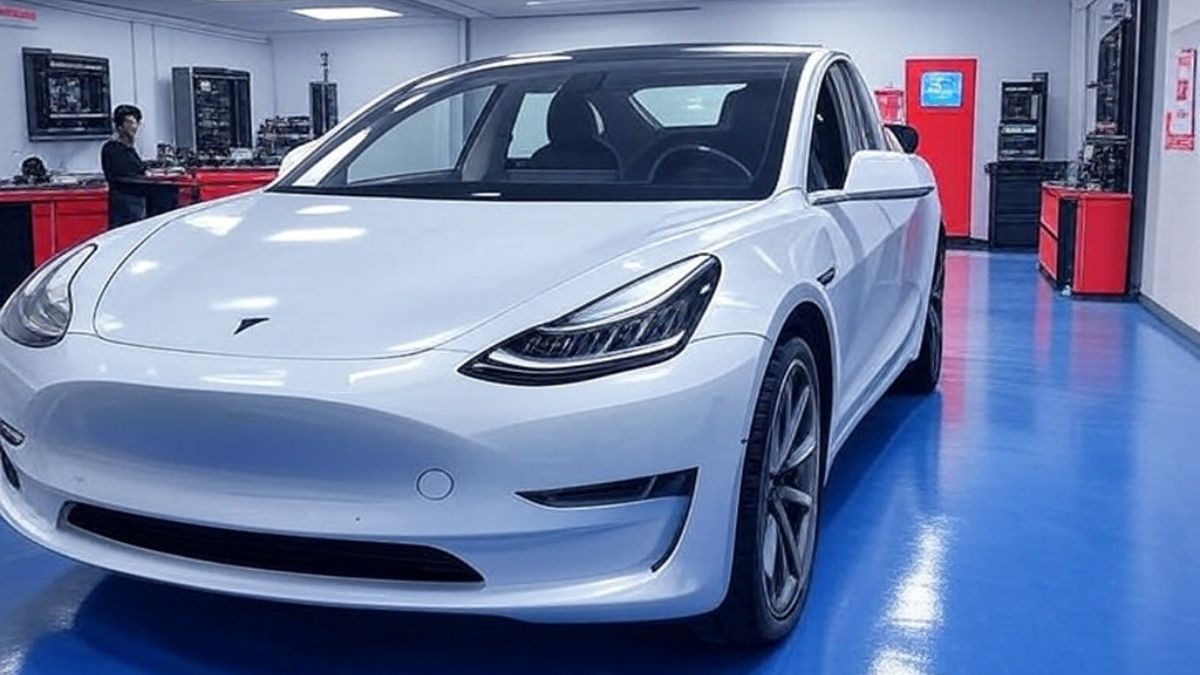
So, What’s the Damage on Her Model 3?
The damage estimate Consuelo received? About $18,000. That aligns with what another group member, Isai Herrera, reported as his repair bill after his Tesla took a beating from hail last year. That’s not just bodywork—that’s the cost of restoring the car to Tesla-worthy cosmetic standards, where aluminum panels, precise body lines, and multiple sensors make even the smallest dent feel like a full-blown crisis.
But not everyone sees the damage as a bank-breaking sentence. Enter Jillian Lancaster, who writes:
“That looks like $5-$8K worth of PDR work. I would get a black hood and hatch from the junkyard and call it good.”
That’s a refreshingly practical take. Why? Because paintless dent repair (PDR) has become a go-to solution for Tesla owners dealing with minor to moderate hail hits. Unlike traditional auto body shops that might replace panels and repaint, PDR preserves your original paint and is often faster and cheaper. It’s the same technique that’s being discussed when folks analyze the Cybertruck’s ultra-tough stainless steel and the impact of PDR on reducing repair costs.
Another member, Troy Rader, made a valuable point:
“A body shop will charge a lot. As others said, a good paintless dent repair shop will do it for far far less.”
And don’t forget Angela Hinojosa, who chimed in with a savvy budget hack:
“Buy whatever body part you can find used.”
You see the trend here? When faced with what feels like an impossible choice, there’s a rising DIY-adjacent community workaround: PDR, junkyard shopping, and function-over-form repairs.
The Bigger Picture: What’s This Really About?
This situation isn’t just about hail. It’s about what we expect from our cars in a world where software and brand restrictions can turn a fully functioning EV into a second-class citizen. It’s about what happens when ownership is conditional - not on how well the vehicle works, but on whether Tesla still recognizes it as worthy.
That’s why people like Consuelo pause before walking away from a damaged car. Because even though it may be riddled with dents, it still runs. The tech inside still works. And for $10,000? It might beat the pants off most used cars in that price range… if you're okay losing Tesla’s ongoing support.
It also raises questions about how OEMs shape your post-accident options. Should an automaker have the power to limit features after you've bought the product? That’s an ethical debate that goes well beyond Teslas. It’s showing up in other industries, too, where right-to-repair and digital restrictions are gaining traction in legal circles.
If this all sounds vaguely familiar, you’re probably thinking of stories like the new GMC Sierra EV that arrived with a door dent and the dealer’s advice was to wait until it gets another dent—because then the fix might be “worth it.” That kind of unchecked logic leads to customer frustration and confusion.
So, Should Consuelo Keep the Tesla?
If you're asking me? It’s a case-by-case decision. But here’s the playbook:
-
If you can live without Supercharging or software updates...
-
If you plan to drive it locally and not resell anytime soon…
-
If you find a solid PDR technician and don’t care about cosmetic perfection…
Then yes, keeping the car might make more sense than replacing it. Especially in a used car market where $10K doesn’t go nearly as far as it used to.
But don’t go into it blind. If you're reading this and dealing with hail damage, I strongly recommend checking out this guide on the 3 most important things to do if your vehicle suffers hail damage. It’ll help you understand your options before signing anything.
How Salvage Titles Affect Tesla Ownership and Resale
Let’s not sugarcoat this: once a Tesla receives a salvage title, it enters a kind of automotive twilight zone. It still runs, still looks like a Tesla, and might even drive like new after repairs, but in the eyes of Tesla and many insurance companies, it’s now something else entirely.
First, the most unlikeable consequence is what Tesla itself might do. Owners like Rick Marsh in Consuelo's Facebook thread are already warning: supercharging may be disabled. Software updates? Gone. That shiny Full Self-Driving (FSD) you either paid $12,000 for or were considering subscribing to monthly? Off the table—whether you owned it outright or not. Rick wrote, “I have a friend whose Tesla Model S was totaled last year. He bought it back and lost the ability to SC, get software updates, and lost his FSD... Tesla told him it was a FSD liability issue to continue on a salvaged car.”
This isn’t a minor glitch. It’s the software backbone that makes Tesla what it is. You lose over-the-air updates, which can affect everything from range improvements to basic interface upgrades. And for many Tesla owners, the idea of losing connectivity is more painful than a few dents from hail.
Then comes insurance. Some insurers flat-out refuse to offer comprehensive or collision coverage on salvage-title vehicles. Others may offer only limited liability. That means you’re essentially flying without a safety net. If it gets hit again or stolen, you're likely eating the loss. And trying to switch insurers down the line? That can turn into a circus of phone calls and “sorry, we don’t cover salvaged Teslas.”
Resale value also takes a nosedive. The moment that title changes from "clean" to "salvage," you can often kiss 30-50% of your car's market value goodbye. Buyers are wary, even if repairs were done to perfection. There’s always that question: What else could go wrong later?
On top of that, if you ever plan to sell it, you’ll likely be dealing with a smaller, more informed niche of buyers - folks who are either rebuilding cars or hunting for parts. That’s fine if you're prepared, but it can be a time-consuming process that requires patience and negotiation.
Now, here’s a curveball many don’t consider: parts value. Salvaged Teslas - especially ones like the Model 3 - still carry strong value in parts markets. Battery modules, infotainment systems, motors, and interior components can all be resold, potentially netting more than the cost of keeping the car. That’s why some owners turn their damaged Teslas into donor cars or part them out piece by piece.
But doing that requires time, tools, and either technical skill or the help of a trusted mechanic. It’s not for everyone, but it’s worth mentioning for the DIY crowd.
In other words, keeping a salvaged Tesla isn’t just a decision about a car - it’s a decision about stepping into a new kind of ownership experience. You gain flexibility and possibly save money, but you also take on more risk, less support, and a very different relationship with the brand.
For those willing to accept that trade-off, the salvage path might just be worth it. For others, it’s a warning sign to walk away.
For those who plan to keep their salvaged Tesla and continue using it as a daily driver, there’s one more unusual challenge to consider: charging access. If you're living in a rental or shared housing situation, you might suddenly find yourself in a bind when it comes to installing a home charger. In fact, one frustrated Tesla renter recently shared how their landlord outright refused to allow a charger installation—even at their own expense. This real-world story sheds light on how tricky Tesla ownership can become without a supportive charging setup. It’s a must-read for anyone considering an EV, especially if your living situation isn't exactly EV-friendly.
Would you trust a salvaged Tesla if you couldn’t supercharge or update it? Have you ever repaired a totaled vehicle and come out ahead? Share your experience in the comments below—I’d love to hear your story.
Let’s Talk
What would you do in Consuelo’s place? Is it worth $10,000 to drive a dented Tesla with no supercharging, or would you rather start fresh, even if it means downgrading? Have you dealt with hail damage and salvaged titles before?
Drop your thoughts in the comments below.
Have you ever kept a car after it was totaled out by insurance? What happened next?
Let’s open the hood on this discussion. 👇
Armen Hareyan is the founder and Editor-in-Chief of Torque News. He founded TorqueNews.com in 2010, which since then has been publishing expert news and analysis about the automotive industry. He can be reached at Torque News Twitter, Facebook, Linkedin, and Youtube. He has more than a decade of expertise in the automotive industry with a special interest in Tesla and electric vehicles.
Image source: Consuelo Ramireze (Used under Fair Use Copyright Close) and Grok.


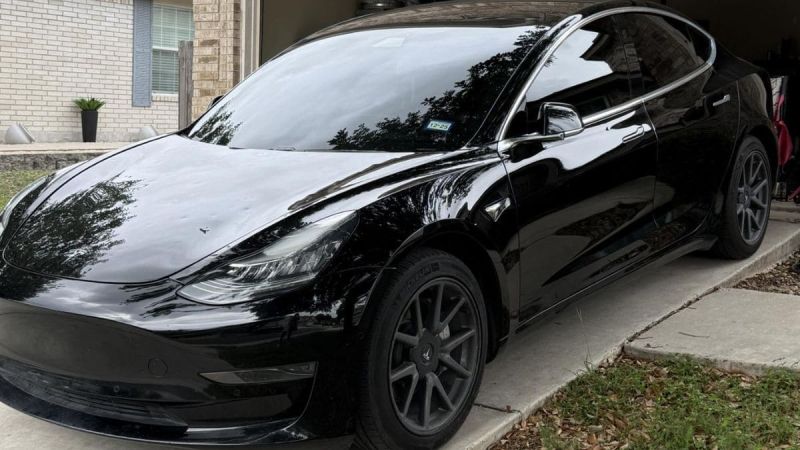




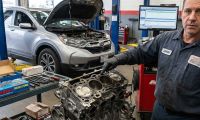
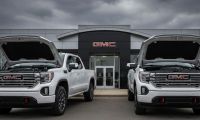
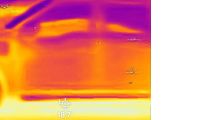
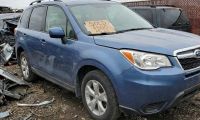
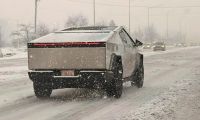
Comments
Just so we're clear here,…
Permalink
Just so we're clear here, but hail can't really total a car, but it will dent. The car woukd have to be near worthless for hail to total it, of course.
It is because Teslas cost so…
Permalink
In reply to Just so we're clear here,… by Buzz Wired (not verified)
It is because Teslas cost so much and take so long to repair.
Yes, hail can total a car…
Permalink
In reply to Just so we're clear here,… by Buzz Wired (not verified)
Yes, hail can total a car. It happens all the time and it doesn’t always take a lot. It’s cost of repairs vs cost to total. If you’re in Texas, then you won’t have a salvage title. Hail total losses in TX have a clean title.
Leave it as is. Great buy…
Permalink
Leave it as is. Great buy and will not attract the anti Tesla the key scratches.
Pre dented battle car.
Permalink
In reply to Leave it as is. Great buy… by Doug Ross (not verified)
Pre dented battle car.
Take it and drive it until…
Permalink
Take it and drive it until it's dead/dead. I paid $10K for a Ram 1500 with a clean Car Fax, problem was it was owned by the service manager at the dealery. This ment that only the service work was reported. The fact that it had had multiple fuel pumps and at least two TIPMs never got reported. Died in seven months and ended up donating it. At least youlnow your cars history.
$10k is just the start and…
Permalink
$10k is just the start and even pdr will cost another 8k. So we're really looking at $18k to get a Tesla that doesn't look like a total wreck. For $18k, getting a used Tesla that can still get supercharging and updates isn't too hard. So why bother?
Because it may not be that…
Permalink
In reply to $10k is just the start and… by Steve (not verified)
Because it may not be that bad and if you’re ok with driving a car with some dents, then why not? If you’re in Texas, then you won’t have a salvage title. Hail total losses in TX have a clean title.
I would do it as long as you…
Permalink
I would do it as long as you don't care about the dents. Probably not worth it if you want to fix the dents.
One thing to check / keep in mind, find out if the insurance company is going to "brand" the car. If they total it, it's very likely you'll lose any remaining warranty (I think you probably still have a warranty on your HV battery).
This story is a bit…
Permalink
In reply to I would do it as long as you… by Michel de Breyne (not verified)
This story is a bit bothersome in that Tesla feels they have the right to remove operational features because a vehicle has aesthetic issues. External hail damage should not have any affect whatsoever on the operation of the car. My 2014 Subaru Outback 3.6 R had 42,000 miles on it and was in little old lady garage kept condition when hit by hail. Damage was so severe it would have been a total but the insurance company agreed to pay over $9,000 to have the vehicle disassembled, repaired and painted. It was perfect and I drove it for 3 more years until I sold it back to the original dealer for $10,000. When they appraised it they presented the Car Fax which listed the damage as severe but failed to mention it was all due to hail damage and had been strictly cosmetic. I'm sure the dealer sold my car at an auction and the buyer got a terrific deal on a very low mileage vehicle with all the bells and whistles.
I would have fought harder with Tesla about who actually owned the car and whether they had the right to remove, or failed to maintain, functional features which the vehicle owner had purchased initially. Paint damage has naught to do with the mechanical operation of the Tesla. IMO Tesla is stealing from the owner.
I'd check the market value as if the car was in perfect condition, subtract the value of the features Tesla was removing and make an offer to the insurance company. With a salvage title the owner is going to take a huge loss when they eventually try to sell or trade the car.
If you’re in Texas, then you…
Permalink
In reply to I would do it as long as you… by Michel de Breyne (not verified)
If you’re in Texas, then you won’t have a salvage title. Hail total losses in TX have a clean title.
So note to self.. don't…
Permalink
So note to self.. don't report a jail damage to insurance unless it's completely wasted, and just replace some panels.
Always do. Especially, if…
Permalink
In reply to So note to self.. don't… by Lucidmaster (not verified)
Always do. Especially, if you’re in a state that doesn’t require you get salvage title for hail total losses. There are plenty of states that don’t like Colorado, Texas, Missouri, etc…
Sooo many incorrect and/or…
Permalink
Sooo many incorrect and/or inaccurate statements...Let me help the author and readers out.
For starters...salvage vehicles are illegal to operate on US streets and roads. The vehicle must be repaired and presented for inspection at your local DMV/Motorist services. Then upon passing the inspection, the title status is changed from SALVAGE to REBUILT. REBUILT title vehicles ARE legal to insure and operate on all US roads.
Next...Tesla may turn off FSD and supercharging because they are not certain the vehicle is safe....but the solution is DEAD simple. Have Tesla inspect and recertify the car (there is a cost), they WILL re-enable the services once they deem the vehicle is safe. Hello again FSD and supercharging!
Lastly, look at facebook marketplace or Offerup. Some resellers offer used AND aftermarket Tesla panels. You will find any part you need to fix them. Totally worth fixing in the presented scenario of the article.
What would the insurance companies do if you don't accept a buy back? They sell it at auction, usually a car dealer buys it. In the example of the article, a 2019 Tesla Model 3 with hail damage will sell for 4-7k, the dealer will fix it, get is Tesla inspected/activated, and sell on the open market for a decent profit and someone gets to buy a cheaper Tesla. Win/Win. Selling rebuilt title vehicles is not that hard, they are usually cheaper and in this economy a cheap price talks to people!
One last thing about insurance...no insurer will cover a salvage vehicle, but most will a rebuilt title vehicle. There are some exceptions (like the one that is represented by a lizard) that will not take a new customer with a rebuilt title but they WILL cover existing customers whom add a rebuilt vehicle to their policy. The trick is to get through the door as a client, then later add said vehicle.
Source: I am a Rebuilt Vehicle Inspector and I have clients that do this every day. Hope this helps out!
For starters you’ve made…
Permalink
In reply to Sooo many incorrect and/or… by Mr Inspector... (not verified)
For starters you’ve made several incorrect statements, but don’t worry I’m here to help. Salvage vehicles are not illegal to operate on every state road, as it’s very state specific. Some states don’t require you to get salvage titles for hail losses, so you’ll still have a clean title. Texas, Colorado, and Missouri are just a few examples. Also, most insurers will still insure a car with a salvage title and in most instances you can still carry Comprehensive and collision coverage.
Please do some research before you attempt to correct people with factual incorrect points. Don’t belittle people and the make false statements, as you sound ignorant
I'm glad you're willing to…
Permalink
In reply to For starters you’ve made… by Tc (not verified)
I'm glad you're willing to help, but start by learning some reading comprehension skills. If you felt belittled, those are your problems to deal with, I hope you seek professional help for that or find Jesus. Being factual is not arrogant, but you seem to be arrogant and incorrect in spades.
FEDERAL laws don't allow salvage vehicles on the road. Simply because certain states **choose** to not salvage a car is A COMPLETELY SEPARATE ISSUE as the vehicle is at no point a salvage title vehicle, therefore, it is still legal to operate. I guess that concept is too difficult for you to understand.
And since your half-defective synapses are not firing correctly, here is a reference for you to educate yourself with. Good luck!
law.usnews.com/law-firms/advice/articles/how-does-a-salvage-title-work-overview-and-faq
Sounds to me that you should…
Permalink
Sounds to me that you should have figured out in advance, Texas is not a good place to own a EV for all the reasons in this article. A no win situation and a car company and insurance industry which cripples what you want to accomplish.
There are options for this…
Permalink
There are options for this person.
They could get another model 3 if they wanted. New model 3 leases are $249 a month.
And, I just bought a used Acura RDX for $12k.There are other vehicles options for them near $10k that are luxury vehicles.
When we panic, we cannot use our cortex where imagination and ideation live. This person has other options.
Almost makes you want to not…
Permalink
Almost makes you want to not put in the insurance claim for hail damage. Especially if you knew that they were going to just total it. I don't think Tesla would know that it now has baby pockmarks, and at least you could still get updates and use all the features.
Unless you're extremely…
Permalink
In reply to Almost makes you want to not… by Teri (not verified)
Unless you're extremely image conscious, leave it as is, don't file with insurance. Life goes on, car works fine, no loss of services or moolah.
If it’s already totaled, the…
Permalink
In reply to Unless you're extremely… by Douglas Engstrom (not verified)
If it’s already totaled, the insurance was already knows. They aren’t going to un-total it, and won’t insure it. This decision needed to happen before reporting it to the insurance company.
Texas doesn't brand vehicles…
Permalink
Texas doesn't brand vehicles that have been totaled by hail as salvage.
in the state of Texas a hail…
Permalink
in the state of Texas a hail damaged vehicle would not have a salvage title if the owner decided to buy it back
Oooooor (and this is just a…
Permalink
Oooooor (and this is just a crazy, off the top of my head idea), drive it with the little hail damage that I cant even notice in the image. Just a crazy thought. 🤷♂️
The title will not be a…
Permalink
The title will not be a salvage title because the car is still drivable, the only way it becomes a salvage title is if the car cannot be driven and since it's just hail damage you will get a new title for the car once you get the old one back from your insurance company you apply for a new title
The issue is why a vehicle…
Permalink
The issue is why a vehicle has a salvaged title. If the vehicle was damaged because of a crash that’s one thing. If it’s because of hail damage that’s another.
Do not file a claim for the…
Permalink
Do not file a claim for the hail damage and take it to a PDR shop - if no claim, you will not have a salvage title.
This article makes a big…
Permalink
This article makes a big deal about not being able to upgrade to FSD. If the alternative is buying a used car that has no option for FSD, as would be true of virtually every used car in existence, why would this matter even a little bit? Losing Supercharging access would be a huge drawback. The author assumes based on a single reported past incident that Tesla policy today is to disconnect any vehicle with a salvage title from Supercharging. Did the author try to confirm this with Tesla? Wouldn't that be appropriate instead of making an assumption? Speaking of assumptions, is it necessarily true that the car would be issued a salvage title? While we are posing questions, does anyone else have the impression that TorqueNews articles have a consistent, strong anti-Tesla bias?
How is $18k considered…
Permalink
How is $18k considered totaled for that vehicle? Shouldn't a 2019 vehicle be worth more than that? I just wrecked my 2022 Camaro Convertible, was $22k for parts, paint, and labor. Would of had to of been like $32k+ to be considered totaled.
Do Tesla's lose more value than most vehicles?
This is a long article, but…
Permalink
This is a long article, but the long and short of it is, if the automaker has control of over what your car can do after you buy it; and that it will require service updates that the automaker won't provide, what it sounds like you don't really own what you bought.
Pagination